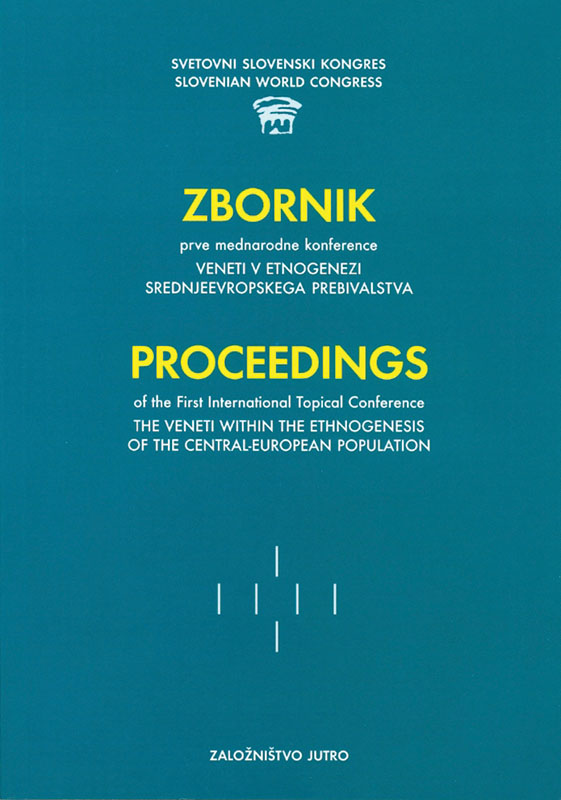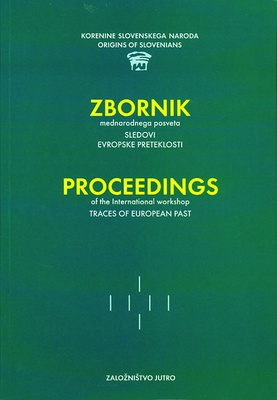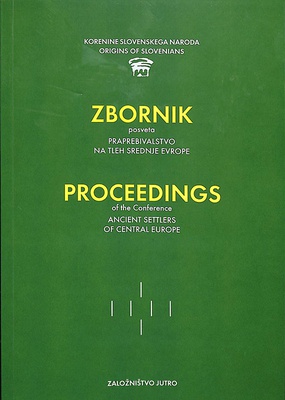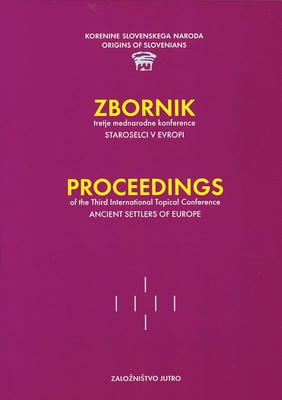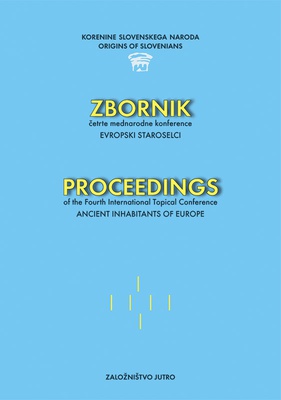SKUPINE KNJIG
(I.) ZBORNIK KONFERENCE VENETI V ETNOGENEZI SREDNJEEVROPSKEGA PREBIVALSTVA (2001)
- Velikost:
- 17 x 23,8 cm
- Tisk:
- enobarvni
- Število strani:
- 240
- Vezava:
- trda vezava
- ISBN:
- 9789616433068
- Prodajna koda:
- 9015
- Cena:
- 23,00 €
- Akcijska cena:
- 15,00 €
Do sredine preteklega tisočletja so v slovanskem svetu nedvoumno vedeli, da so bili njihovi predniki na njihovih ozemljih že od nekdaj. Tedaj pa je v italskem svetu vzniknila misel, da če Germani, ki so prišli na ozemlja rimskega imperija med »preseljevanjem narodov«, živijo zahodno od Slovanov, potem so Slovani morali priti na svoja ozemlja še kasneje. To misel so pograbili germanski oz. germanizirani učenjaki in jo razvijali naprej, do različice o prihodu Slovanov iz pripjatskih močvirij.
Zaslepljeni z napredkom, ki je prihajal iz germanskega (in pogermanjenega) sveta, so slovenski učenjaki to učenje sprejeli in uveljavili. Z redkimi ljudmi nasprotnega mišljenja so kmalu opravili. Po desetletjih miru pa se oglasijo »neki« Tomažič, šavli in Bor ter postavljajo učene trditve na laž. Ker se dve desetletji po tem dejanju stvari še niso pojasnile in ker hi Slovenci vendarle radi vedeli, kako je bilo v resnici z našimi predniki, smo pri Slovenski konferenci Svetovnega slovenskega kongresa organizirali v okviru projekta »Korenine slovenskega naroda« posvetovanje Veneti v etnogenezi srednjeevropskega prebivalstva. Namen posvetovanja je bil, zbrati čim več podatkov o naši preteklosti do »preseljevanja narodov«, čim več dejstev in argumentov za eno ali drugo trditev, da bi se po njihovi primerjavi prej ali slej ugotovilo, kako je najverjetneje bilo. Del svojih zastavljenih ciljev je posvetovanje doseglo in v tem nalogo uspešno opravilo. Dosežki so predstavljeni v prispevkih, zbranih v tem Zborniku.
Prispevki v tem zborniku so ali v slovenščini ali v angleščini, kakor so izbrali avtorji, in večina ima povzetek v drugem jeziku.
Up to the middle of the past millenium the Slavic peoples were without dout aware of the fact that their ancestors had settled their territories from ancient times. Then in the Romanic world the idea was suggested that if the Germans, who arived on the territory of the Roman Empire during the time of great migrations of peoples and who presently live west of the Slavic nations, then it must also be true that Slavic tribes arrived and settled their territories at a somewhat later period m history. This idea was well accepted among German (or germanized) scholars and was developed further, up to its variant hypothesis that the Slavic people originate from the Pripjat marshes.
Misled by the new studies and theories proposed mainly by German historians Slovenian scholars uncritically accepted and also implemented this doctrine. The few critical dissenting voices daring to oppose them were silenced. For decades this remained untouched and unquestioned until a few amateur scientists like the Rev. Tomažič, Dr. šavli, and Mr, Bor again raised critical voices and opposed and questioned the historical truth of the accepted origin of the Slavic peoples. During the last decades this issue still remains unsolved and obscure. Since the Slovenian nation would like at last to find the historical truth about its origins, the Slovenian Branch of the World Slovenian Congress organized the First International Topical Conference The Veneti within the Ethnogenesis of Central-European Populations as part of the long term project »Origins of the Slovenians«.
The aim of the conference was to collect as many facts, evidence and arguments as possible about our distant past up to the period of the great migrations of peoples and which could speak in favour of one or other theory. In this way the resulting confrontation of evidence and arguments and comparison of facts should reveal the most probable objective truth about our distant past. In pursuing this goal the conference partially succeeded and the outcome of the conference is presented m present Proceedings.
The conference papers are presented either in Slovenian or in English, as chosen by the authors. However, most of the papers also have a summary in the complementary language.
